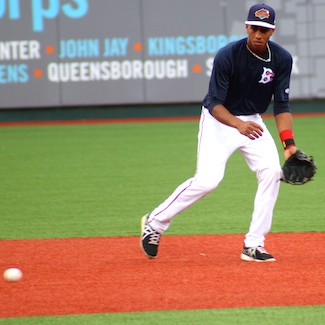Although it may sound like a M. Night Shyamalan movie, the sixth tool does exist in baseball, and is arguably the most important and yet overlooked tool a player can possess.
We know the traditional five tools are hitting for average, hitting for power, base running (speed + skills), throwing ability and fielding ability. Players are generally rated on a scale which determines where on the spectrum of each tool that they lie. If they excel in all five, that is the coveted five tool player that every scout is trying to find.
As they stand alone, these tools are nothing more than abilities, and make no determination as to whether or not the player will be successful on the field of play. So what determines whether a player with three, four, or even five tools becomes a successful player at the major league level?
This is where the sixth tool comes into play.
The sixth tool has been incorrectly identified by some in the past, as the pitch recognition tool. While this is very important to develop, I would still list that as one of the attributes that fall under one of the traditional five tools — hitting for average. You can’t hit for average if you can’t recognize pitches.
No, the sixth tool is much more than that.
The sixth tool is having an in-depth knowledge of the game, as well as one’s self. It’s primarily mental for the athlete. It gives the player the ability to get a better jump on a ball, or know what pitch is coming next. This is the sort of thing that can’t necessarily be measured, which is why it is often the most underrated and overlooked tool in the player’s tool box.
The sixth tool is not just some way to explain how crazy plays happen — like the iconic Derek Jeter “Flip Play” during the 2001 ALDS. There is no such thing as “right place at the right time” to explain how a crazy play just took place, it was the player’s innate sixth tool which allowed it to unfold.
The sixth tool is what I would argue gets a promising prospect to the big leagues, and it also transforms good prospects into eventual Hall of Famers. These players are able to read angles, understand strategy so well that they are thinking three steps ahead, and know themselves better than the other players on the field know themselves. They tend to rise to the occasion no matter what you throw at them. When you watch these players, you say they have “it.” I usually say they’re just damn good ball players.
The most recent player that comes to mind that demonstrates the sixth tool is Joe Panik, of the San Francisco Giants. I followed Panik’s career very closely due to the fact that he is the only athlete to ever play professional sports from my alma mater high school. He wasn’t drafted out of high school, but went on to St. John’s University and was one of the top college short stops in the nation back in 2011. He was selected at the end of the first round of the 2011 draft, and the pick immediately drew criticism.
The criticism didn’t stop there. Although Panik was listed as a top prospect in the Giants organization, all you heard was people questioning the guy’s tools, and question if he would be anything more than a fringe platoon player due to his lack of “standout tools.” Unfortunately for them…no…actually, fortunately for them, Panik did have a standout tool — the sixth tool. The kid could just play ball. It more than compensated for his lack of standout tools. And now, the Giants are reaping the benefits of having an All-Star second baseman, just starting to test the limits on what he can accomplish on the field.
When evaluating prospects and players, it is wise to not get too excited when we hear about “toolsy players” that have done little-to-nothing to show they can play the game of baseball. A player that jumps out at me with this distinction is Amed Rosario. Everyone gets googley eyes when someone is rated highly with their tools. They have visions of the next Ken Griffey Jr., or Ozzie Smith in their minds. The reality is the majority of those players are going to wash out, and the players who possess the sixth tool — the players who may have been ranked towards the back end of the prospect list due to their lack of standout tools, are the players that make an impact on a team.
However, when you do find that coveted five tool player that possesses the sixth tool…it’s magic. That’s when you get your Mike Trouts, your Griffeys, and your other iconic players that define generations. But that doesn’t necessarily mean players need all five tools to get to that level either. Larry Bird, the godfather of the sixth tool (applied it to basketball), proved that.
So how do you know when you have a player in front of you that possesses the sixth tool? I said earlier there is no way to measure it — I hate to say it, but you just know it when you see it. After watching the player perform day in and day out it becomes easy to identify. And even though it may be obvious that they have the sixth tool, the players that possess it often take a back seat to players with the standout tools that can be measured on a scale. That is, until you can’t ignore it anymore.

















